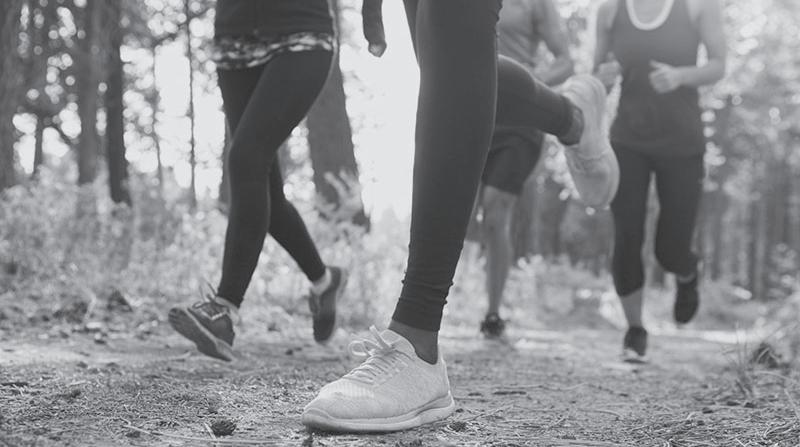
4 minute read
Natural Wound Care Solutions More Physical Activity May Cut Racial Disparities In Heart Health
Many people look for natural products with “clean” ingredients, especially in the food, beverage, skin care and beauty categories. In fact, the market for clean label ingredients is projected to reach $64.1 billion by 2026, according to Allied Market Research.
For many common ailments or minor injuries, there’s a natural treatment that can be used in place of hard-to-pronounce ingredients and preservatives.
“This same kind of clean ingredient demand is migrating to the first-aid space with many of these natural alternatives being used to treat anything from scrapes and bug bites to wound odor and pulled or sore muscles,” said Dr. Billy Goldberg, a “New York Times” best-selling authorand emergency room physician. “In fact, some companies are beginning to incorporate these kinds of natural and efficacious ingredients right into their products.”
Goldberg and the first-aid experts at CURAD, which have made adhesive bandages since 1951, offer these suggestions for natural ingredients you can use at home to treat common ailments:
1. Epsom Salt - Named for a bitter saline spring at Epsom in Surrey, England, Epsom salt is not actually salt but a naturally occurring mineral compound of magnesium sulfate. Long known as a natural remedy for several ailments, Epsom salt can be used to relax muscles and relieve pain in the shoulders, neck and back. It can also be applied to sunburns or dissolved in the bath to help relieve sore muscles or detox.
2. Aloe Vera - Few things soothe sunburn like aloe vera. With analgesic, anti-inflammatory and soothing properties that ease the healing process, aloe vera gel contains phytochemicals that help reduce pain and inflammation. Also helpful in the healing process of cuts and scrapes, the
CURAD Naturals line of adhesive bandages are infused with aloe vera in the wound pad and surface of the bandage, which is enriched with the antioxidant vitamin E to help soothe and moisturize skin.
3. Hydrogen Peroxide - A mild antiseptic that can be used to prevent infection of minor cuts, scrapes and burns, hydrogen peroxide is often used for the initial cleaning of wounds. Simply apply a small amount on the affected areaalternating with water to avoid killing good bacteria - to help release oxygen, which causes foaming that aids in cleaning and the removal of dead skin.
4. Baking Soda - Bicarbonate of soda, commonly known as baking soda, can be used for more than baking. From removing stains to cleaning teeth and more, it can also be used to help treat a variety of wounds. In addition to being an odor absorber, it can be applied to insect stings and bites, such as those from bees or mosquitoes. Whether making a paste using baking soda and water then applying to the bite or using an option like CURAD Naturals adhesive bandages featuring baking soda, the chemical compound can help soothe the skin. In addition to absorbing wound odor, the bandages provide skin-friendly comfort and stretch with a four-sided seal to keep dirt and germs out.
5. Manuka Honey - A honey native to New Zealand, manuka honey contains methylglyoxal as an active ingredient and has unique antibacterial properties that speed healing and help prevent and fight infections when applied as a topical wound treatment. It may also help soothe coughs and sore throats, prevent tooth decay and improve digestive issues. Learn more about natural first-aid products at CURAD.com.
Family Features
Increasing physical activity levels, especially among people at higher risk for cardiovascular disease, can greatly improve heart health and could help reduce racial disparities in heart disease, according to a new science report.
The scientific statement from the American Heart Association, published Wednesday in the journal Circulation, highlights the need to remove barriers to physical activity among groups at higher risk for cardiovascular disease, including adults who are older, female, Black, have depression, disabilities or lower socioeconomic status, or live in rural areas.
Physical activity levels are often lower in these groups and increasing levels could help lower cardiovascular risks, the report found. It looked at individual and community-level physical activity and provided suggestions for how to increase it.
“Helping everybody improve their heart health is important,’’ statement writing committee chair Gerald J. Jerome said in a news release. Jerome is a professor in the department of kinesiology at Towson University in Maryland.
“We know regular physical activity is a key component of optimal heart health,’’ he said. “These findings provide an opportunity to focus our efforts on physical activity programs in places where people need them the most.’’
Fewer than 1 in 4 U.S. adults meet federal guidelines for physical activity levels. These guidelines call for adults to get at least 150 minutes of moderate-intensity physical activity each week - achievable with activities as simple as a 20-minute daily walk.
The statement offers suggestions for how to increase physical activity in communities that need it most. For example, it recommends seeking community input, engagement and leadership when developing strategies to remove barriers such as cost, lack of access or time. It emphasizes the need to engage community members in the design of programs to increase participation and ensure cultural appropriateness. And it addresses the need for a team approach that includes input from health care professionals.
“Unfortunately, many groups that have a higher risk of developing heart disease also on average report lower amounts of physical activity,’’ Jerome said. “There is good news since some programs are focused on collaborating with communities to increase physical activity levels among high-risk groups.’’
But Jerome noted that more needs to be done. “More research funding is needed to support communities and researchers working together to develop engaging and sustainable ways that help residents increase their physical activity levels,’’ he said. “Lawmakers should expand coverage for preventive care and support, such as assessment and programs that promote physical activity in the clinical setting.’’










